Non-ferrous metals, plastics, CFRP and GFRP materials as well as steels are usually ground with conventional SiC wet abrasive paper. All short-chipping materials such as hard metals, glasses, ceramics and mineralogical samples, on the other hand, are ground on diamond grinding discs.
In the following we would like to give you an overview of our “grinding abrasives”.
Jump to the desired topic:
SiC wet abrasive paper
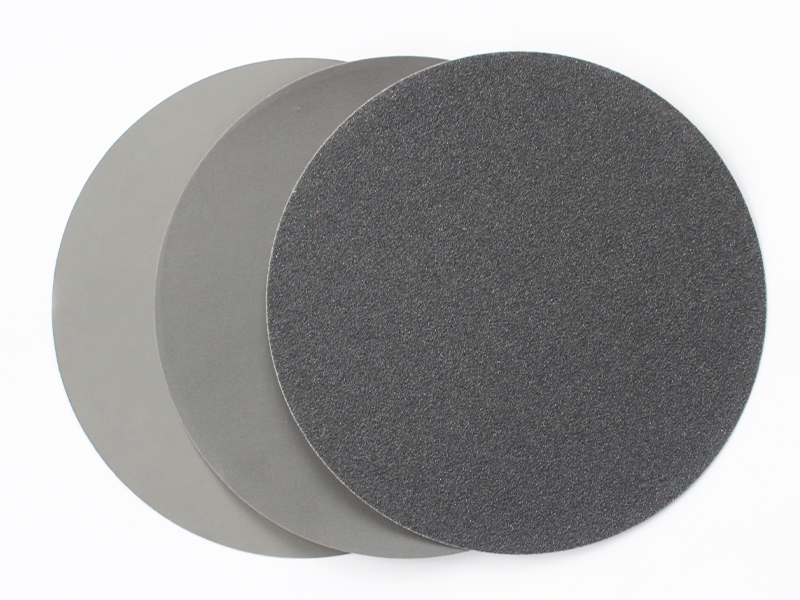
Available variants:
We keep the non-adhesive SiC abrasive paper in stock for you in diameters of 200, 230, 250 and 300 mm. You can get the grit sizes (P60), P80, P120, P180, P220, P320, P400, P500, P600, P800, P1000, P1200, P2500 and P4000 from the Hermes company. In addition, we supply P2400 and P4000 grits from another manufacturer.
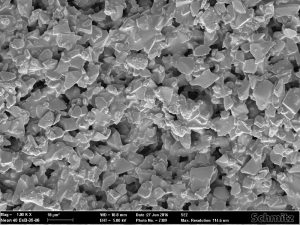
Here you can see a SEM image of the P4000 abrasive paper with even, fine grit distribution.
Matching non-self-adhesive abrasive paper is available in double-sided adhesive film, spray mount, and metal mounting discs to click onto your magnetic working disc. Below you will find a list of ways to apply the wet abrasive paper to your working disc.
We carry self-adhesive SiC wet abrasive paper in the most popular diameters of 200, 250 and 300 mm. The grit sizes available are P120, P180, P400, P600, P1000, P1200, P2400 and P4000.
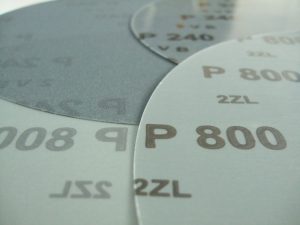
We carry SiC laminated in the most common diameters 250 mm from stock and 300 mm on order from 5 units.
TIP // If you want to perform an optical emission spectrometry on your components, we also offer aluminium oxide abrasive paper to prepare the samples. This way, the carbon and silicon contents of the SiC grinding paper do not falsify the result of the chemical analysis.
Overview of the fastening options for SiC wet abrasive paper:
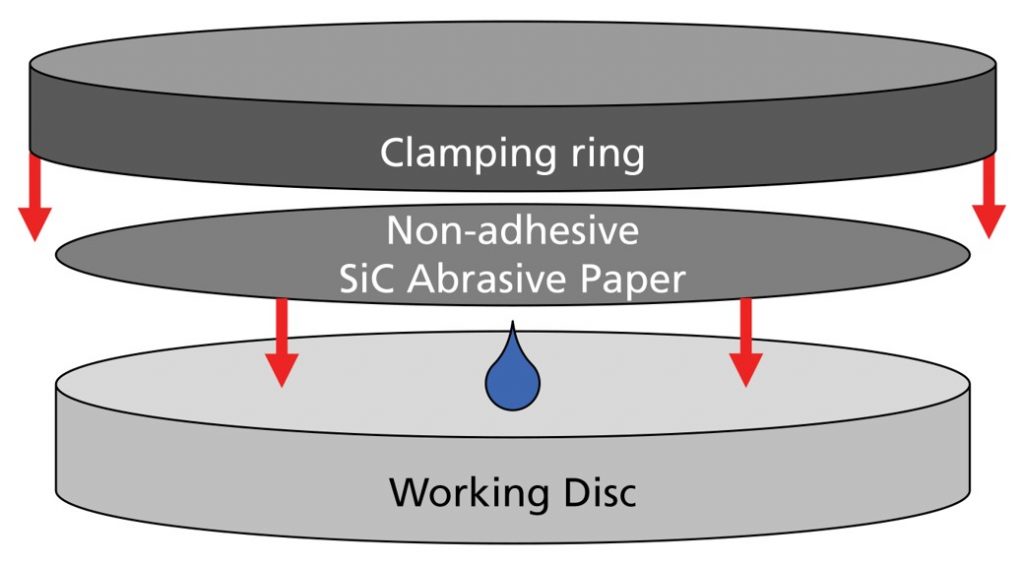
- Clamping ring: First, a drop of water is placed on the working disc, then the non-adhesive SiC wet abrasive paper. This is fixed to the working disc with the aid of a clamping ring.
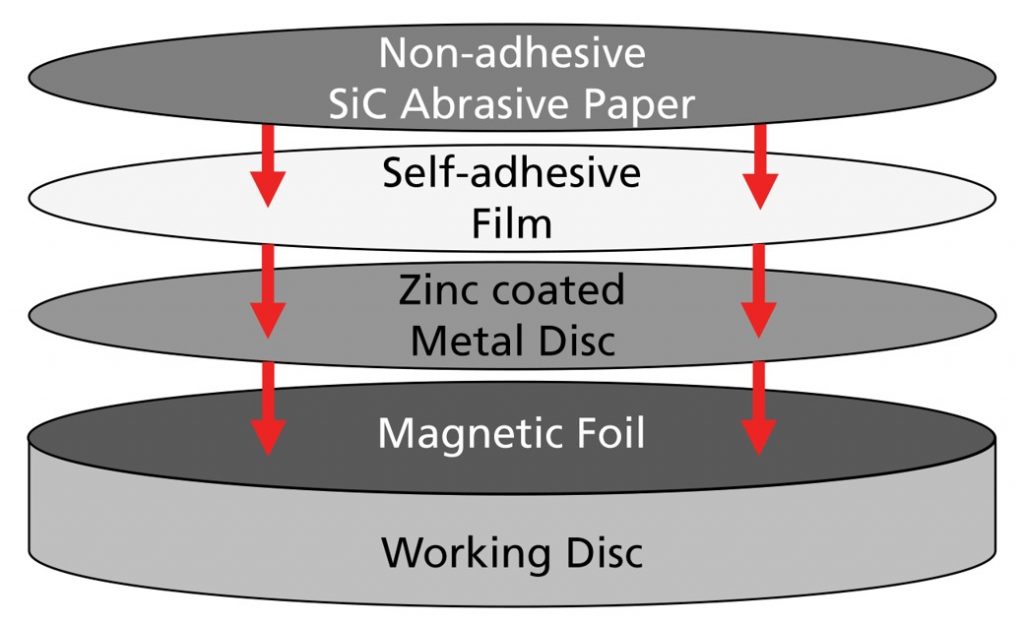
- Double-sided self-adhesive film: The non-adhesive SiC wet abrasive paper is glued to a galvanized steel plate with the aid of a double-sided self-adhesive film. This in turn is fixed by magnetism to the working disc, which has been provided with a self-adhesive magnetic foil for this purpose.
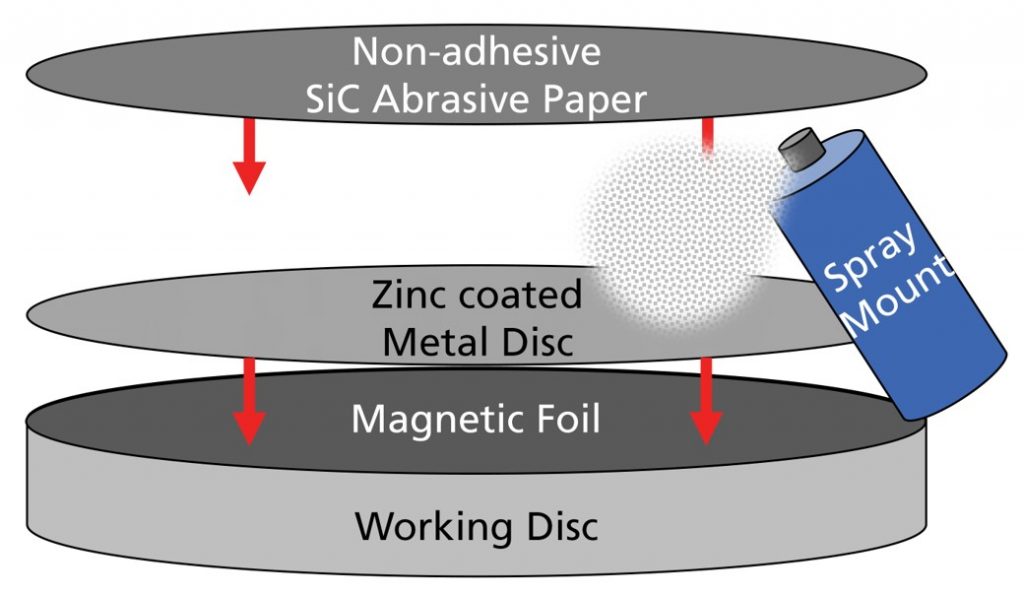
- Spray mount: Here, a galvanized steel plate is attached to the working disc using a self-adhesive magnetic foil, too. Instead of using a double-sided self-adhesive film, however, the non-adhesive SiC wet abrasive paper is glued to the galvanized steel plate using spray mount.
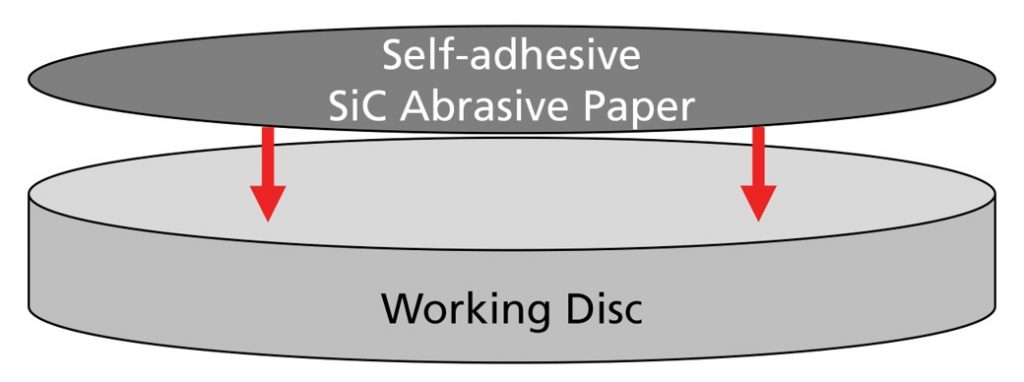
- Self-adhesive wet abrasive paper: In this option, the self-adhesive SiC wet abrasive paper is glued directly onto the working disc.
TIP // We will be happy to advise you on the advantages and disadvantages of the individual options depending on your needs.
Diamond grinding disc
Product overview
ADAMANT (Diamond grinding disc)
- Resin bond
- Very high coating thicknesses, stock removal rates and service life
- Self-sharpening
- With wear indicator
- Grit sizes: P80 to P1200
- Diameter: 250 and 300 mm
DSS (Diamond grinding disc)
- Nickel or synthetic resin bond
- Very high surface quality and edge sharpness
- Nickel: High stock removal rate with long tool life
- Synthetic resin: For fine grinding
- Grit sizes: P80 to P1000 (nickel bond)
- Grit sizes: P400 to P2500 (resin bonded)
- Diameter: 200, 250 and 300 mm
IDAMANT (Diamond grinding and polishing disc)
- Resin bond
- High stock removal rates, flatness and service life
- Grit sizes: 15 to 3 µm
- Diameter: 250 and 300 mm
DPS (Diamond plane grinding disc)
- Nickel bond
- For hard and brittle materials
- Self-adhesive or on carrier plate
- Grit sizes: P60 to P1000
- Diameter: 200, 250 and 300 mm
ADAMANT Diamond grinding disc
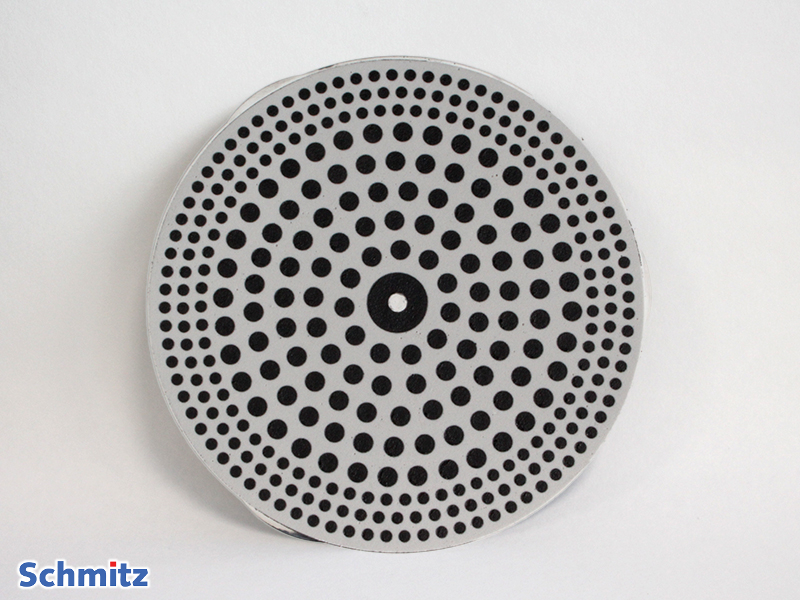
ADAMANT© is a resin-bonded high-performance diamond abrasive disc. It is available in P80, P220, P600 and P1200 grit and 250 and 300 mm diameter.
- Highest coat thickness available in the market
- Very high abrasion rate
- Extremely long lifetime
- Full water contact of your samples after grinding-in
- Self-sharpening
- Wear-optimized coating geometry with wear indication
- Unbeatable price
- Patent pending
COMPOSITION // Punched-through cavities in a porous polyurethane coating are filled with a diamond abrasive mixture. After a certain grinding-in time, your samples even have full contact with the PU layer which ensures optimum sample cooling. The PU layer is worn evenly together with the abrasive bodies. When metal starts to shine through, the service time has run out.
IDAMANT Diamond grinding and polishing disc
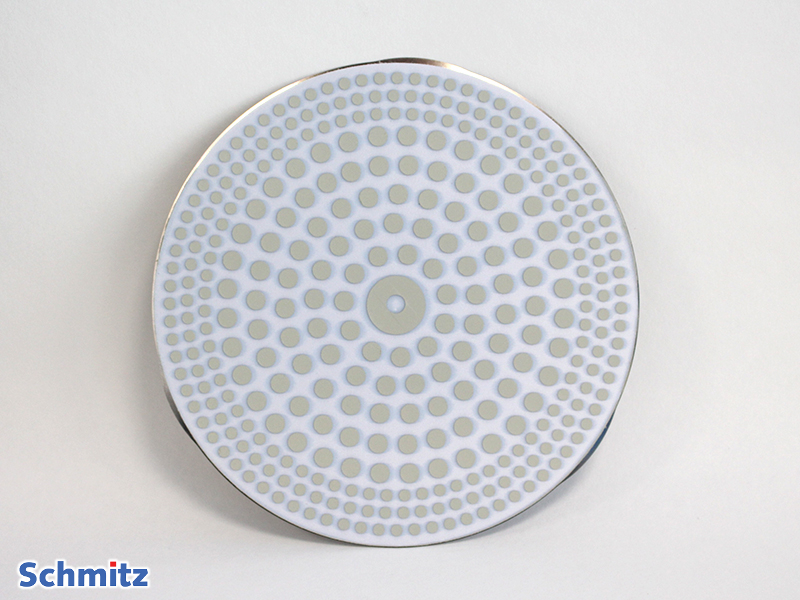
IDAMANT© is a resin-bonded high-performance diamond abrasive and polishing disc. It is available in 15 µm, 6 µm and 3 µm grain size and 250 and 300 mm diameter.
- Coat thickness can compete in the market
- High abrasion rate and planeness
- Long lifetime
- Self-sharpening
- Wear-optimized coating geometry with wear indication
- Unbeatable price
COMPOSITION // Punched-through cavities in a protective film are filled with a diamond abrasive mixture. The substrate is our hard RamTec polishing cloth. When plain (white) cloth is visible, the service time has run out.
NOTE ON ADAMANT AND IDAMANT // The carrier plate is made of brushed stainless 1.4016 with three practical handles. It is simply attached to the magnetic rotary disc of your machine.
Conventional wheels have a uniform abrasive coat distribution. However, coatings always wear out faster near the centre than near the outer diameter. Therefore, our coating geometry was optimized to ensure uniform wear.
DPS Diamond plane grinding disc
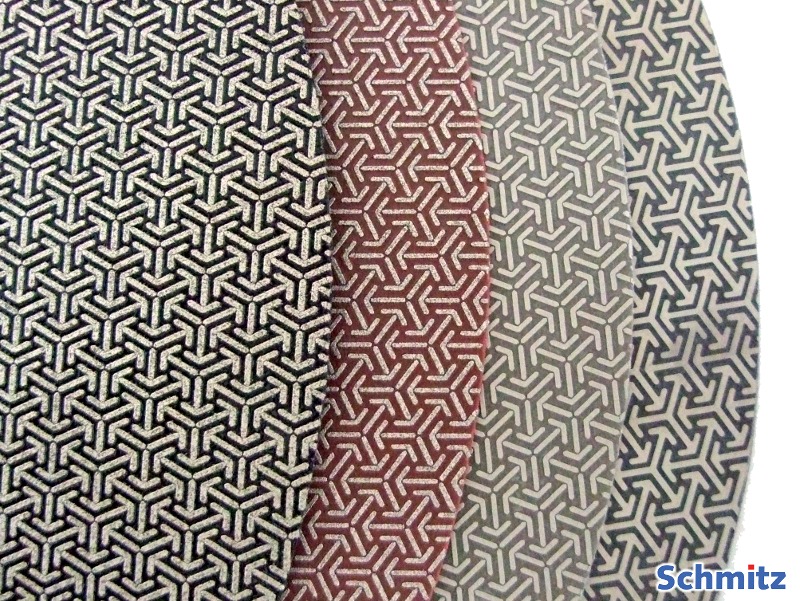
The nickel-bonded diamond plane grinding disc is suitable for all short-chipping (hard and brittle) materials. It is available as a self-adhesive version or on a magnetic mounting plate in diameters of 200, 250 and 300 mm. The grit sizes are P60, P120, P200, P400, P600 and P1000. Only running water is required. Frictional heat is thus avoided and abrasion product is washed away.
DSS Diamond grinding disc
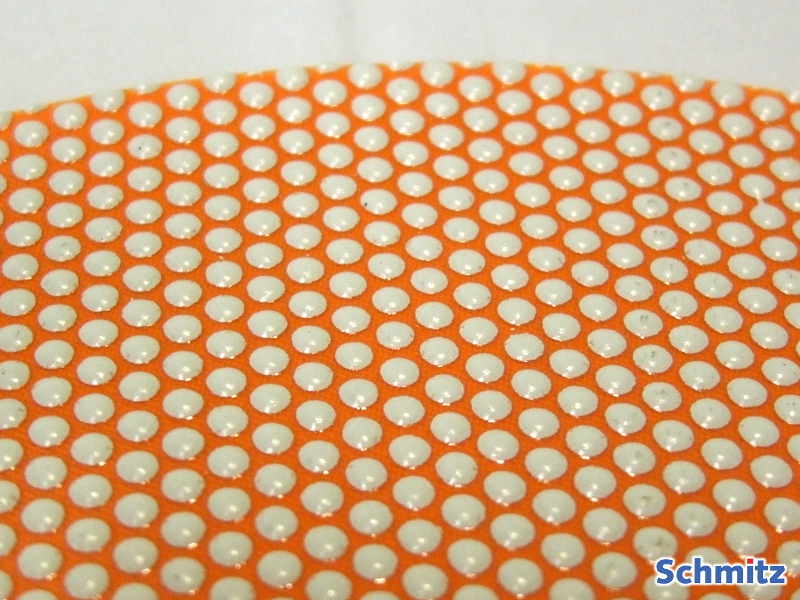
The optimum coordination of the distances between the grid points results in a very high surface quality and edge sharpness with maximum stock removal rate. Our diamond grinding discs are available in two different bond types. The nickel-bonded version (‘Ni’) ensures a high stock removal rate with a long service life. Resin bonded (‘K’) diamond grinding discs are best suited for fine grinding. The lubricant or coolant here is also the continuous water supply. It is available as a self-adhesive version or on a magnetic backing plate in diameters of 200, 250 and 300 mm. The available grit sizes with nickel bond are P80, P120, P200, P400, P600 and P1000. Resin bonded discs are available in grits P400, P1000 and P2500.
Dressing sticks
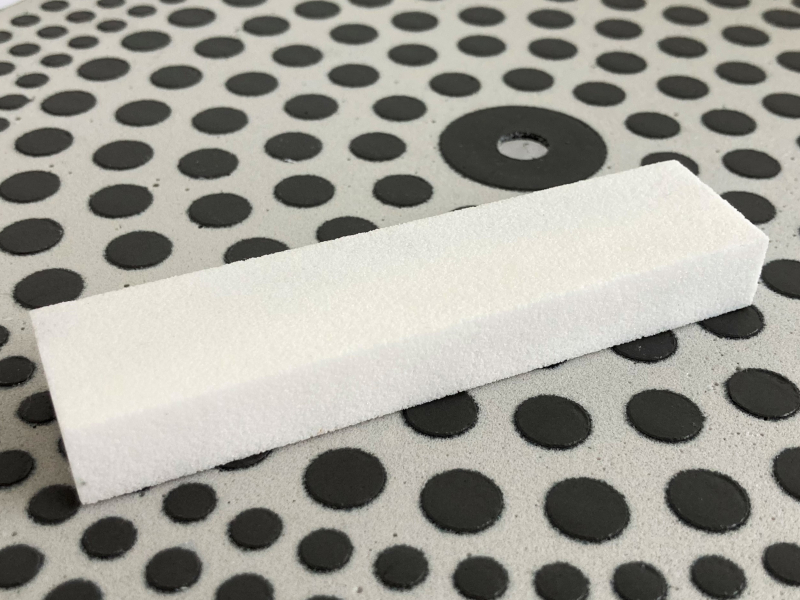
The diamond grinding discs should be dressed every 5 to 10 minutes with a dressing stick. This will reset the bond.
Grit size table for grinding grits FEPA P-grain vs. micrometer
Use this chart to compare FEPA P grit for abrasive paper with grit size in microns. FEPA is the European association of abrasive manufacturers. FEPA distinguishes between grits for paper (FEPA P) and abrasive grits (FEPA F), e.g. for abrasive stones, which will not be discussed in detail here.
| FEPA P | Micron |
|---|---|
| P60 | 269 μm |
| P80 | 201 μm |
| P100 | 162 μm |
| P120 | 125 μm |
| P150 | 100 μm |
| P180 | 82 μm |
| P220 | 68 μm |
| P240 | 59 μm |
| P280 | 52 μm |
| P320 | 46 μm |
| P360 | 41 μm |
| FEPA P | Micron |
|---|---|
| P400 | 35 μm |
| P500 | 30 μm |
| P600 | 26 μm |
| P800 | 22 μm |
| P1000 | 18 μm |
| P1200 | 15 μm |
| P1500 | 13 μm |
| P2000 | 10 μm |
| P2500 | 8 μm |
| P3000 | 7 μm |
| P3500 | 5 μm |

